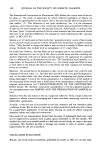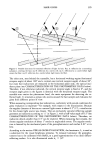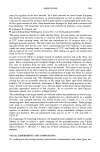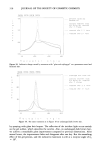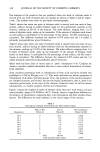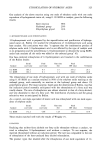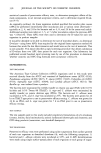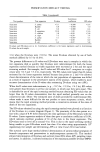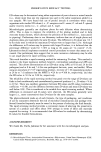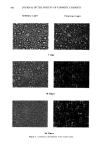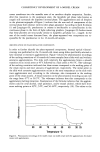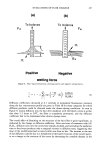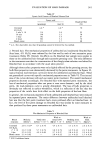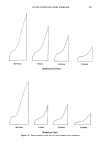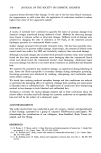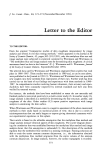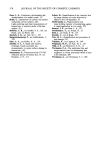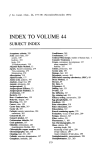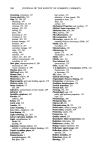320 JOURNAL OF THE SOCIETY OF COSMETIC CHEMISTS Our analyses of the products that are produced when one mole of ethylene oxide is reacted with one mole of stearyl and coco alcohol are shown in Tables I and II, respec- tively. The analyses were done via gas-liquid chromatography. Table I shows that when one mole of ethylene oxide is reacted with one mole of fatty alcohol, adducts having no added ethylene oxide are the predominate material in the mixture, making up 60.3% of the mixture. The other adducts, ranging from 1 to 8 moles of ethylene oxide, make up the remainder. If the amount of ethylene oxide found on each adduct is multiplied by the percentage of that adduct, the EO contribution is calculated. The difference between the observed 0.978 moles and the 1.0 added is primarily polyoxyalkylene glycol formation. Table II shows that when one mole of ethylene oxide is reacted with one mole of coco fatty alcohol, adducts having no added ethylene oxide are the predominate material in the mixture, making up 54.8% of the mixture. The other adducts, ranging from 1 to 8 moles of ethylene oxide, make up the remainder. If the amount of ethylene oxide found on each adduct is multiplied by the percentage of that adduct, the EO contri- bution is calculated. The difference between the observed 0.993 moles and the 1.0 added primarily represents polyoxyalkylene glycol formation. Much work has been done in recent years to "peak" ethoxylates (3-6). Catalysts are chosen to produce peaked ethoxylates that have a more narrow distribution of ethoxy- lated oligomers. Some excellent pioneering work in ethoxylation of fatty acids and fatty alcohols was published in 1956 by Wrigley et al. (7). This work indicated two salient properties of ethoxylation of alcoholic hydroxyl groups. First, the products of the reaction sequence are complex mixtures, and second, the reaction begins immediately that is, there is no induction period prior to the start of the reaction. Induction time, as will be shown subsequently, is a salient property of fatty acid ethoxylation. Figure 1 shows the number of moles of ethylene oxide that react with stearic acid and stearyl alcohol, using 0.5% KOH at 160 C. Clearly, there is a significant difference in the kinetics of ethoxylation comparing fatty acid ethoxylation and fatty alcohol ethox- ylation. The differences are most dramatic in the initial stages of the reaction. Table I Ethoxylation of Stearyl Alcohol With One Mole Ethylene Oxide Moles of EO Area % EO Contribution Designation [Value A] [Value B] [Value (A) (B)] 18-0 0 60.3 O. 000 18-1 1 13.6 0.136 18-2 2 8.8 O. 176 18-3 3 7.9 0.237 18-4 4 5.9 0.236 18-5 5 2.2 0.110 18-6 6 0.9 0.054 18-7 7 0.3 0.021 18-8 8 0.1 0.008 Total 100.0% Total calculated moles added 0.978
ETHOXYLATION OF HYDROXY ACIDS 321 Table II Ethoxylation of Coco Alcohol With One Mole of Ethylene Oxide Moles of EO Area % EO Contribution Designation [Value A] [Value B] [Value (A) (B)] NO EO 0 54.8 0.000 EO 1 1 19.6 0.196 EO 2 2 10.2 0.204 EO 3 3 6.8 0.204 EO 4 4 5.5 0.220 EO 5 5 2.1 0.105 EO 6 6 0.7 0.042 EO 7 7 0.2 0.014 EO 8 8 0.1 0.008 Total 100.0% Total calculated moles added 0.993 Unlike the kinetics observed with the ethoxylation of fatty alcohols, the base-catalyzed reaction of ethylene oxide with fatty acids is divided into two stages. The first is a stage in which negligible product forms. Slowly, the reaction of the acid and ethylene oxide begins after an induction period to give mostly ethylene glycol monoester. In the second stage, after the addition of about one mole, the reaction rate increases (8). Clearly, the existence of an induction period in the ethoxylation process indicates that the reaction is one of a fatty acid and ethylene oxide, rather than a fatty alcohol and ethylene oxide. As seen in Figure 2, the ethoxylation of fatty alcohols will not occur to an appreciable extent without a catalyst. The catalyst can be either acidic or, more typically, alkaline. Alkaline catalysts generally produce fewer by-products. One of the by-products that is made in the ethoxylation of fatty alcohols is polyethylene 0 0.5 1 1.5 2 2.5 3 3.5 -• Stearic Acid + Stearyl Alcohol Reaction Condition 1. Temperature 150 C 2. Initial Pressure 45 psig 3. Catalyst 0.1 % KOH Time At Reaction Condition (in H .... Figure 1. Moles of ethylene oxide added versus time.
Purchased for the exclusive use of nofirst nolast (unknown) From: SCC Media Library & Resource Center (library.scconline.org)



